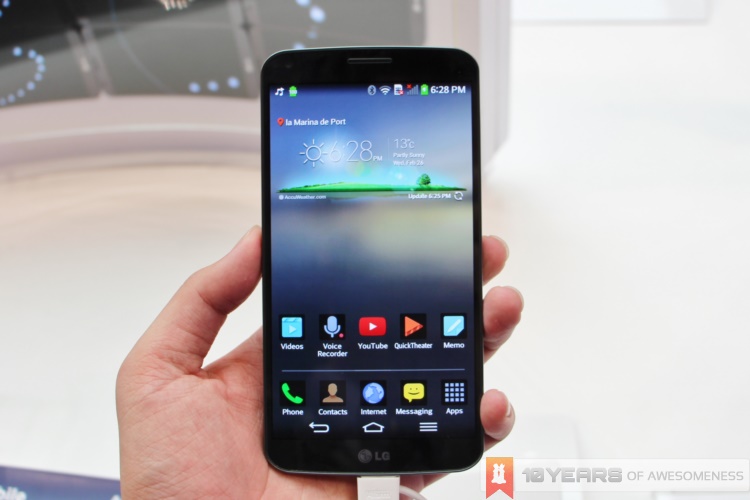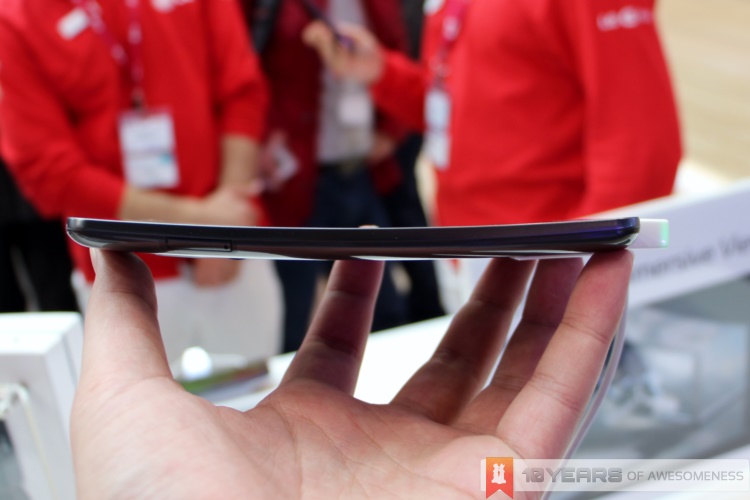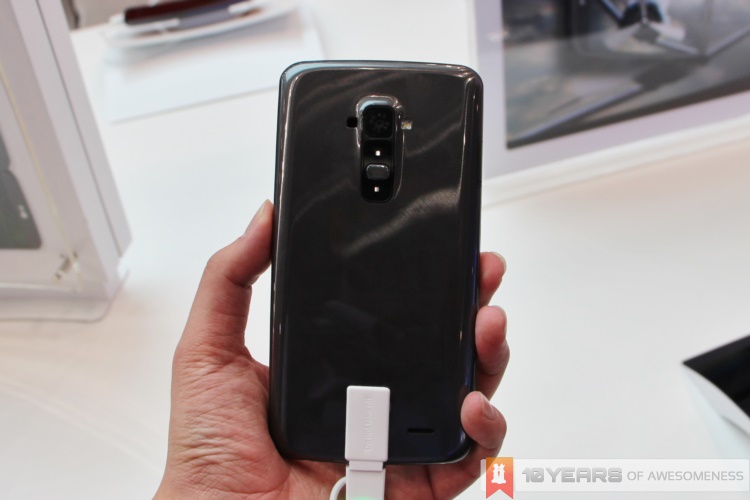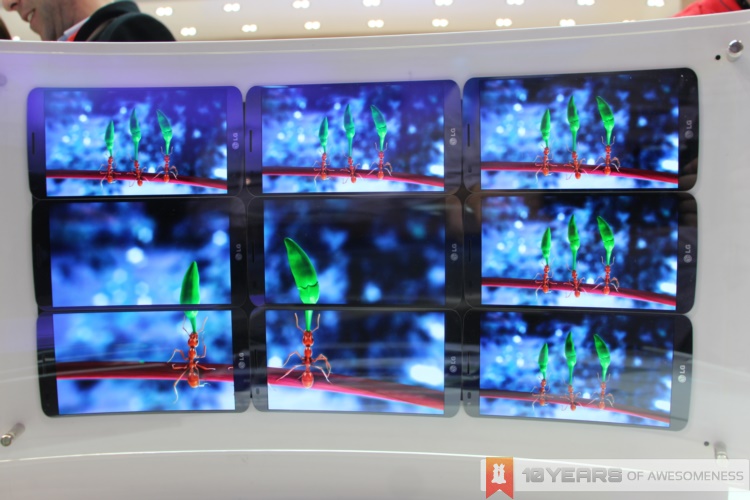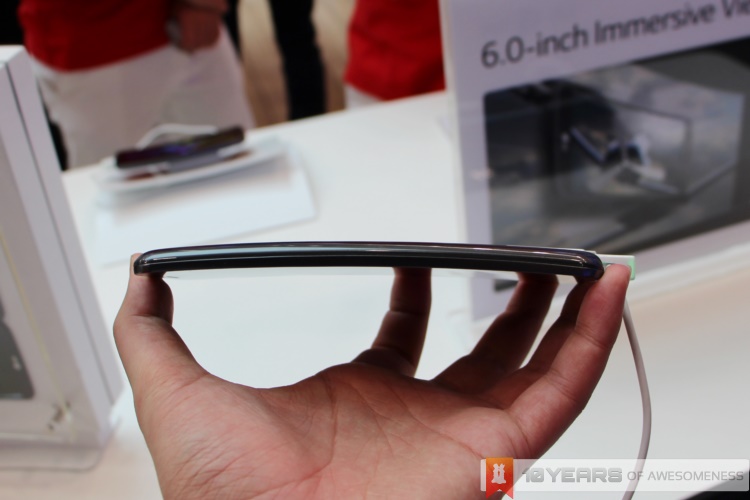
LG may have already launched its curved smartphone some months ago, but that’s not stopping the Koreans from displaying its G Flex smartphone at the front and centre of its MWC 2014 booth. As one of the first smartphones in the world to feature curved plastic OLED display, we naturally had to take a closer look. After all, there is a chance that the G Flex may be coming to Malaysia officially.
Right off the bat, the LG G Flex feels huge. Perhaps it was the curvature, perhaps it was the large display, but the G Flex looks pretty big in real life. But after holding it for a while, it quickly becomes apparent how the curvature helps a lot in the ergonomics of the smartphone. The G Flex is not only easier and much more comfortable to hold, it also serves to position the microphone closer to the mouth when speaking on the phone.
If you take away the curvature, the G Flex actually looks just like an enlarged LG G2, the company’s flagship Android smartphone announced late last year. There’s the same design language and button placement at the back, and even similar-looking glossy plastic back covers – which isn’t saying much.
In terms of hardware, too, the G Flex shares a close similarity with the G2: Snapdragon 800 quad-core processor, 32GB of onboard storage, as well as 13MP rear and 2.1MP front cameras.
The G Flex also sports a curved 3500mAh battery, which can compress along with the entire phone chassis when pressure is applied from the back, making it lie flat. The self-healing back cover, too, is pretty cool – especially when you’ve seen a demo of it in real life. If anything, this self-healing coating seems a lot more innovative and practical for smartphones than a curved display.
The G Flex’s display will take you by surprise initially, especially when you scroll through the home screens. The curvature makes even simple tasks like scrolling through the home screens a pleasant experience…well, for a few hours or so. Despite being 6 inches across, the display only sports a 720p resolution. To our eyes, however, the difference was barely noticeable; everything on the display is crisp, and colour reproductions are very good.
In terms of software, LG’s updated the original Knock On software to integrate a new security solution into the mix. Called Knock Code, it is a very interesting attempt at making the dour process of unlocking a device protected by a password or PIN much more secure, but equally convenient too. In addition, the new Dual Browser finally unlocks the QSlide multitasking capabilites to support more apps to run in multi-window Mode. The Dual Browser lets you open two apps to run at the same time, and both apps’ screen real estate can be adjusted to fit any need.
But a persistent question remains: why build a curved phone? LG has taken some flak from many parties since the launch of the G Flex for attempting to be different for the sake of being different. Sure, the G Flex is more comfortable to hold and the curved screen provides an optimum viewing angle for the eyes, but I’m still struggling to find any value to the G Flex. Besides, the new software enhancements will be making its way to current LG flagships as well.
Judging by the rapid international availability – and demand – of the G Flex, however, there just may be something about the G Flex that’s making people want one. The LG MWC booth, too, were packed with people checking out the Self Healing demos, and taking turns applying pressure to flex the device. Perhaps it was the showcase of what can be done on a smartphone that is the reason of this attention. Curved displays may or may not be the future in mobile devices, but LG is showing that more can be done to make smartphones better, be it with somewhat gimmicky curved displays or even self-healing chassis on smartphones.
More importantly, the G Flex makes us more excited about what’s to come in the next LG flagship.
Follow us on Instagram, Facebook, Twitter or Telegram for more updates and breaking news.


